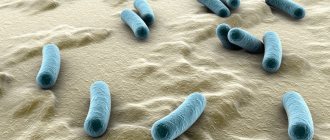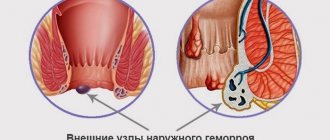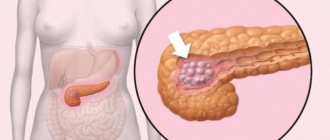Cholestasis is a disease associated with stagnation of bile in the liver. The name comes from the Greek words chole and stasis, which are translated as “bile” and “stagnation”. Bile stagnates because there is some kind of obstacle on the way of its release, a blockage that does not allow it to freely enter the intestines.
The obstruction occurs in any of the areas from the liver to the intestines. In this case, bilirubin, still produced by the liver, is not released, but is carried through the bloodstream throughout the body. The main causes of cholestasis are a decrease or cessation of bile secretion due to liver problems.
Signs of the disease are primarily itchy skin, dark urine, and light-colored feces. The causes of the disease are viruses, alcohol intake, medications, toxic damage and a number of diseases (histiocytosis, cholangitis, tuberculosis, cirrhosis, sarcoidosis, etc.), the main one is damage to liver cells by bile acid.
Cholestasis can accompany any liver-related pathology. Therefore, this disease requires urgent treatment.
Main symptoms
The very first symptoms of cholestasis are itching (often starting in the liver area, for a long time it can be the only sign of the disease). Usually the itching is very bothersome at night, less during the day.
Then disturbances in the digestion of food occur, the patient loses appetite, complains of abdominal pain, and often vomiting. The main symptom is that the urine becomes dark in color, and the feces become light , and steatorrhea begins - the release of excess fat with feces. Diarrhea is common, which removes fluid from the body, and the patient loses weight.
In some cases, skin pigmentation changes and jaundice appears. Tumor-like spots form on the skin of the face, neck, and back due to lipid metabolism disorders. The temperature rises, mood swings begin, and the patient is worried about fatigue.
Since cholestasis provokes a drop in the level of vitamins, such as A, D, K and others, in the body, signs of night blindness . For the same reason, the patient experiences increased bleeding.
Such a sign of liver disease as its enlargement occurs in rare cases with cholestasis without cirrhosis.
In the chronic course of the disease, due to prolonged jaundice, the skin becomes golden in color, fat deposits on it also become yellow , yellow formations develop around the eyes (sometimes in other parts of the body), the so-called xanthomas, which appear as a result of fats are retained in the body. Stones often form in the gall bladder and bile ducts - cholelithiasis.
All of these symptoms appear as a result of the entry of large amounts of bile into the blood (with its complete or almost complete absence in the intestines) and the effect of bile on liver cells . If symptoms corresponding to cholestasis are detected, treatment should begin immediately as soon as the doctor makes a diagnosis and determines the type of disease.
Symptoms and causes of cholestasis
Cholestasis syndrome is not an independent disease, but a manifestation of pathological processes that can be localized along the entire path of production and excretion of bile - from the membranes of the hepatocyte cells responsible for its production to the papilla of Vater (papilla duodeni major) - the valve through which bile, this unappetizing , but an extremely important mixture of digestive enzymes is poured in portions into the lumen of the gastrointestinal tract. In many cases, the presence of cholestasis does not mean that less bile is produced. It just doesn’t go into the duodenum, but penetrates into the bloodstream through the walls of the bile canals, causing bilirubinemia - systemic intoxication of the body with secondary hepatic bilirubin and other enzymes contained in bile.
Symptoms
The signs of cholestasis are similar to the signs of other liver pathologies, especially since very often cholestasis itself becomes a manifestation or complication of diseases such as hepatitis and hepatosis. Patient with cholestasis:
- loses appetite, as food entering the intestines is poorly digested;
- experiences abdominal pain (both in the right hypochondrium and throughout the epigastric region, as well as in the middle and lower parts of the abdomen);
- complains of constipation, nausea and often vomiting;
- feels dry and bitter in the mouth, especially in the morning.
If cholestasis is due to mechanical reasons (obstruction of the bile ducts, cholelithiasis, helminthic infestations), then the pain is localized mainly at the point of the gallbladder and can radiate to the back (at the junction of the right lower rib and spine), the right shoulder blade, shoulder and even to the neck on the right side. Often the pain becomes unbearable - hepatic colic occurs. If cholestasis syndrome is associated with intrahepatic processes or with secondary pathologies in the intestines, then there is no pain. On the part of the liver, there is only an increase in size, leading to a feeling of heaviness and stuffiness in the right side.
Secondary hepatic bilirubin is a very toxic product that can penetrate cell membranes and disrupt their metabolism. Dissolving in lipids, it overcomes the blood-brain barrier and negatively affects the basal ganglia of the cerebral cortex. This is precisely what determines the meaning of the word “bilious” in relation to a person. Patients with cholestasis syndrome are often irritable, aggressive, their mood changes sharply, and self-control is absent or reduced. If bilirubin intoxication lasts a long time, hepatic encephalopathy occurs, which, fortunately, is reversible in the early stages. If the causes of pathological stagnation of bile are eliminated, the symptoms of damage to the central nervous system gradually disappear.
Chronic cholestasis is characterized by two more typical liver syndromes - discolored feces and dark urine. These phenomena are also associated with the metabolism of secondary bilirubin.
In healthy people, this substance, which forms the basis of bile, is released into the duodenum in the amount necessary for digestion and then participates in the process of food fermentation and is partially absorbed back into the bloodstream. In the lumen of the gastrointestinal tract, under the influence of enzymes secreted by the intestinal epithelium and its microflora, bilirubin is converted into urobilinogen and stercobilinogen, and the latter, at the very end of the digestive tract, becomes stercobilin, a characteristic brown pigment.
When bilirubin enters the blood directly, two things happen:
- An increased concentration of urobilinogen occurs in the blood. This substance is excreted by the kidneys, and it is this substance that colors urine in the characteristic beer color.
- Bilirubin does not enter the intestines at all or in limited quantities. As a result, stool, which is brown in a healthy person, is whitish, grayish, or at best yellow in a patient with cholestasis. It is probably wrong to talk about bleached feces in this case; rather, it is uncolored feces of a “natural” color.
In addition to being light-colored, feces with bile stagnation are almost always shiny due to the large accumulation of fat. With a lack of bile, it is almost not digested in the intestines and is excreted unchanged. This phenomenon is called steatorrhea.
Our skin reacts very sensitively to cholestasis syndrome. First, a rash, itching, irritation, inflammation and secondary infections appear in the areas of scratching. If the level of bilirubin in the blood is elevated for a long time, jaundice appears - the most characteristic symptom of liver problems. Gradually, the skin changes color from lemon yellow to golden, and characteristic fatty formations (xanthelasmas) appear in it.
Bile deficiency causes hypovitaminosis due to the cessation of vitamin production by the microflora of the large intestine. The body suffers from a lack of:
- vitamin A, which leads to night blindness (problem of twilight and night vision);
- vitamin D, this leads to diseases of the musculoskeletal system, bone pain, osteoporosis, myopathy, osteomalacia (softening of bones);
- vitamin E – leads to cerebellar ataxia;
- Vitamin K is the main cause of hemorrhagic syndrome and thrombinemia.
The most dangerous complication of cholestasis is biliary cirrhosis, which leads to irreversible changes in the liver parenchyma and manifests itself in the form of progressive portal hypertension, persistent flatulence, and subsequently ascites, weight loss and ultimately the development of terminal liver failure without a pronounced inflammatory process in the liver. liver lobules.
Etiology
The causes of cholestasis can be intrahepatic or extrahepatic. Often several risk factors appear in combination.
Pure hepatic cholestasis is caused by impaired functioning of hepatocytes and the conductivity of bile canaliculi in the liver lobes. Pathology can be caused by:
- Toxic damage to the parenchyma - alcohol, drugs, hepatotoxic drugs, including steroids and contraceptives, exposure to industrial and household poisons.
- Viral infections (primarily hepatitis B and C).
- Congestive heart failure.
- Endocrine diseases (hypothyroidism, hypopituitarism - reduction or cessation of secretory activity of the thyroid gland and pituitary gland);
- Endogenous disorders of metabolism and production of endocrine hormones during pregnancy, menopause, cystic fibrosis, lack of alpha-1-antitrypsin, etc.
Extrahepatic cholestasis is caused by mechanical blockage of the biliary tract:
- Stones in the bile ducts (cholelithiasis).
- Narrowing or dyskinesia of the ducts and gallbladder.
- Increased viscosity of bile.
- Tumor of the gallbladder.
- The presence of parasites in the biliary tract, the occurrence of parasitic polycystic disease in the liver and ducts.
- As a result of pancreatitis or pancreatic tumor.
Types of cholestasis
According to localization, the disease is divided into intrahepatic and extrahepatic cholestasis, according to the nature of the course it can be acute and chronic, with jaundice (when the mucous membranes, sclera and skin are pigmented yellow).
- Intrahepatic cholestasis is a form in which stagnation of bile occurs in the intrahepatic bile ducts or in liver cells, that is, it forms inside the liver.
- Extrahepatic cholestasis is a form when congestion occurs as a result of blockage of the extrahepatic bile ducts.
In acute cholestasis, the symptoms of the disease appear suddenly and are pronounced; in chronic cholestasis, the symptoms are weak and increase over a long period of time (from weeks to months).
Intrahepatic cholestasis is also divided into partial (when the volume of bile secreted decreases), dissociative (the release of only some bile components is delayed) and total (when the flow of bile into the duodenum is completely disrupted).
Causes of intrahepatic cholestasis
- hepatitis;
- alcoholic liver damage;
- cirrhosis;
- taking medications;
- hormonal changes during pregnancy (cholestasis of pregnancy);
- endocrine pathologies (for example, hypothyroidism);
- chromosomal disorders (trisomy 13,17 or 18 chromosomes);
- congenital metabolic disorders (cystic fibrosis, etc.);
- familial syndromes.
Causes of extrahepatic cholestasis
- the appearance of a stone or stones in the bile ducts;
- bile duct;
- thickening of bile;
- pancreatitis;
- malignant tumors of the bile duct and/or pancreas.
Causes of bile stagnation in children, adults and pregnant women
It is believed that the general cause of the development of cholestasis is the initial damage to the liver tissue and its cellular structure by toxic substances, which led to a decrease in its functional ability to drain and pass bile secretions. Based on this, the following causes of this type of pathological condition are identified:
- alcohol abuse, drug use and chronic alcoholism;
- the presence of hepatitis C virus or other strains of this microorganism in the blood;
- work at chemical, metallurgical, coal processing industry facilities;
- long-term use of potent medications;
- imbalance of beneficial and pathogenic microflora;
- infectious infection of the gastrointestinal tract, which was not subjected to adequate drug treatment in a timely manner, or the patient initially had a severely weakened immune system;
- liver tuberculosis (this disease mainly occurs in people in contact with patients suffering from the open form of this disease);
- hormonal imbalances caused by pregnancy (in women carrying a child, this occurs in the first trimester of fetal development);
- oncological processes in the liver tissues, or in the circumference of the gallbladder and its ducts.
In children, cholestasis most often occurs due to infection with parasites, improperly organized nutrition, and adolescence, when all physiological processes are preparing for adult life. In this case, we present those factors in the development of the disease in adults, pregnant women and children that are most often encountered in medical practice.
Diagnostics
If cholestasis is suspected, they rely on medical history and symptoms characteristic of the disease. First of all, they turn to a therapist, then a consultation with a gastroenterologist is required, and you may need the help of a surgeon and hepatologist.
The doctor collects an anamnesis of diseases and complaints, a life history, and conducts an examination. Next, blood tests are prescribed, including biochemical tests , urine tests, and ultrasound is also used to accurately determine the location of the blockage in the biliary tract, since it is important to determine the form - whether the disease is extrahepatic or intrahepatic. In addition, the patient may be prescribed a study using computed tomography and magnetic resonance imaging, which can accurately detect pathological changes in the liver and gall bladder.
Another examination method is endoscopic retrograde cholangiography (if this is not possible, it is replaced by percutaneous transhepatic cholangiography), which reveals the level of blockage.
Magnetic resonance cholangiography, which examines the bile ducts, is considered a promising method; this examination is highly informative.
In addition, a doctor may perform a liver biopsy . But this examination is carried out only after excluding the extrahepatic form, otherwise it may provoke the development of peritonitis.
Treatment
The most effective treatment for both intrahepatic and extrahepatic cholestasis is considered etiotropic therapy , primarily aimed at eliminating the causes. Ursodeoxycholic acid also gives good results, including in cases of liver cirrhosis caused by alcohol poisoning.
To eliminate skin itching, plasmapheresis and opioid antagonists are used in the treatment of the disease.
Since cholestasis is accompanied by hypovitaminosis, which entails side effects that require separate treatment, it is necessary to take vitamins K, D, E and fat-dissolving drugs.
If the obstruction in the bile duct is mechanical in nature or the bile ducts are blocked , then, in addition to conservative treatment, surgical intervention (conventional or endoscopic) is required.
Complications and consequences of cholestasis
With cholestasis, the process of copper metabolism in the body is disrupted. In a healthy state , the body excretes 80% of copper in feces , but during cholestasis, copper remains in the body, causing pigmentation of the cornea. Another consequence of cholestasis is disruption of the cardiovascular system, which leads to arterial hypotension, problems with blood clotting, increased bleeding and an increased risk of sepsis.
In addition, cholestasis provokes diseases such as:
- osteoporosis;
- hemeralopia (decreased vision at dusk, or night blindness);
- the occurrence of stones in the gall bladder and/or bile ducts;
- development of inflammation of the bile ducts (cholangitis);
- liver failure;
- cirrhosis.
Pathogenesis
The formation of bile includes a number of energy-dependent transport processes: the capture of bile components from the blood (bile acids, other organic and inorganic ions), their transfer through the sinusoidal membrane into the cell, then through the canalicular membrane into the bile capillary. The transport of bile components depends on the functioning of carrier proteins built into the sinusoidal and tubular membranes (including Na+-, K+-ATPases, carriers for bile acids, organic anions, etc.). The development of cholestasis is based on disturbances in these transport processes.
With mechanical obstruction of the main ducts, the main significance in the development of cholestasis syndrome is the increase in pressure in the bile ducts (bile hypertension of more than 15-25 cm of water leads to suppression of bile secretion).
Some bile acids, which have pronounced surface-active properties, accumulate during cholestasis and can cause damage to liver cells and increase cholestasis. The main link in the development of hepatocyte necrosis is considered to be damage to mitochondrial membranes by bile acids, which reduces ATP synthesis in the cell, increases the intracellular calcium concentration, and stimulates calcium-dependent hydrolases that damage the hepatocyte cytoskeleton.
The influence of bile acids is also associated with apoptosis of hepatocytes - programmed cell death (there is an increase in the intracellular concentration of magnesium with subsequent activation of magnesium-dependent nuclear proteases, endonucleases and DNA degradation), as well as the expression of HLA class I antigens on hepatocytes, HLA class II on epithelial cells, which is not normally observed cells of the bile ducts, which can be factors in the development of autoimmune reactions against hepatocytes and bile ducts.
Cholestasis in pregnancy
Separately, it is worth mentioning such a pathology as intrahepatic cholestasis, which arose as a result of hormonal imbalance during pregnancy. This disease in pregnant women is relatively rare , however, it can harm the body of both the mother and the fetus. The prognosis for a pregnant woman is usually favorable - cholestasis develops mainly in the third trimester and disappears almost immediately after childbirth. However, the risk of intrauterine fetal death increases to 15%.
The causes of the disease are still unclear. Experts identify three potential groups:
- excess estrogen , which during this period, in particular towards the end of pregnancy, in a woman’s body increases 1000 times;
- compression of the gallbladder and liver by the pregnant uterus (it is in the last trimester that it reaches its maximum size);
- the hereditary nature of the disease (more than half of the women in the family had such pathologies).
In addition, there are factors that also influence the development of cholestasis in pregnancy. If a woman has already suffered cholestasis of pregnancy, then the risk of recurrence during subsequent pregnancies increases to 70%. Liver diseases before pregnancy increase the possibility of cholestasis during pregnancy. In addition, the occurrence of cholestasis is higher in multiple pregnancies and pregnancies resulting from in vitro fertilization, as well as in the presence of close relatives who have suffered from this disease.
Symptoms of cholestasis in pregnancy
- severe itching, especially on the palms and soles of the feet;
- dark urine and light feces;
- jaundice.
Symptoms can appear all at once or one at a time, but most often the only symptom is itching.
Complications of cholestasis in pregnancy
The main complications of the disease in the mother are problems with the absorption of fat-soluble vitamins (A, D, E and K) , unbearable itching and an increased risk of relapse during subsequent pregnancies.
For a pregnant child, there are many more complications. First of all, there is a risk of premature birth for reasons that are still unclear. Further, there is a chance that the baby will inhale meconium during birth, which will cause breathing problems . The risk of intrauterine fetal death is also increased. Therefore, doctors often induce premature birth to avoid complications for the baby.
Diagnosis and treatment of cholestasis in pregnancy
When making a diagnosis, doctors rely on the results of interviewing the pregnant woman about the presence of symptoms of the disease and personal and family medical history, a physical examination, blood tests, measuring the level of bile in the blood, and ultrasound.
Treatment consists of relieving symptoms, primarily itching, and preventing possible complications. In this case, ursodeoxycholic acid preparations, as well as corticosteroids in the form of creams or lotions that relieve itching, are successfully used.
Symptoms of cholestasis
The more pronounced the signs of cholestasis and the greater their number, the more impaired the liver is and the body’s ability to absorb fats and fat-soluble vitamins. The less pronounced the dysfunction of the liver and bile ducts, the paler the clinical picture of this disease will be. Common symptoms of cholestasis are:
- General weakness, migraines;
- Increased fatigue, drowsiness, causeless irritation;
- Depression and apathy;
- Decreased visual acuity;
- Shortness of breath and tachycardia;
- Heart pain;
- Hypotension;
- Dyspeptic disorders;
- The appearance of flatulence and pancreatitis;
- Loss of appetite;
- Disorder and discoloration of stools;
- Darkening of urine, pain when excreting it;
- Edema of the lower extremities;
- Pain in joints, muscles and bones.
Signs of cholestasis during pregnancy are complemented by severe itching of the skin, which is often the only symptom of the development of this disease.
Cholestasis in children, which affects newborns and infants, is manifested by icteric discoloration of the skin and mucous membranes, as well as dark urine and discoloration of feces. Skin itching does not occur in newborns and children in the first six months of life.
Prevention of cholestasis
To avoid the occurrence of cholestasis, it is necessary to promptly prevent and treat diseases of the liver and biliary tract, which result in the development of bile stagnation. These include timely removal of tumors and stones. In addition, regular deworming is necessary. You can support digestion processes with the help of herbal preparations, herbal preparations and herbal teas . To prevent bile stagnation, it is necessary to maintain water balance, that is, drink enough clean water. In addition, you need to stop drinking alcohol, which has the most detrimental effect on liver cells, and also adhere to a special diet low in fat.
Treatment of cholestasis
If the causative factor of cholestasis is known, etiological treatment is carried out: stone removal, tumor resection, timely withdrawal of medications, deworming, etc. In the presence of mechanical obstruction of the biliary tract and the impossibility of radical treatment, it is necessary to restore bile drainage (balloon dilatation of strictures, endoprosthetics, biliodigestive anastomoses).
Dietary restrictions include reducing animal fats in the diet (in the presence of steatorrhea), consuming margarines containing medium-chain triglycerides (their absorption occurs without the participation of bile acids). With the development of hypovitaminosis, vitamin replacement therapy orally or parenterally is necessary. If it is impossible to determine the level of vitamins in the serum, treatment is prescribed empirically, especially for jaundice.
The drug of choice for non-obstructive cholestasis in many cases is ursodeoxycholic acid (UDCA), the safety of which and effectiveness in relation to the clinical and laboratory symptoms of cholestasis have been proven. UDCA is a tertiary bile acid produced in the intestine and liver, accounting for 0.1-5% of the total bile acid pool. The drug is non-toxic due to the hydrophilicity of the molecule. When treating with UDCA, there is a shift in the proportions of the constituent parts of bile towards a sharp predominance of UDCA over other bile acids. UDCA displaces toxic bile acids from the enterohepatic circulation (by competitively inhibiting absorption in the ileum), preventing their damaging effect on membranes. In addition, UDCA is able to integrate into the membranes of hepatocytes, exerting a cytoprotective effect (this was shown in experiments on isolated membranes of hepatocytes, erythrocytes, and gastric mucosal cells), reducing the production of HLA class I antigens on the surface of hepatocytes, preventing the development of autoimmune reactions (immunomodulatory effect). UDCA has a choleretic effect due to cholehepatic shunt. The optimal dose of UDCA is 10-15 mg/kg per day. The drug is taken for a long time (continuously).
Phenobarbital, cholestyramine, colestipol are used to treat skin itching; for refractory itching - plasmapheresis, phototherapy (ultraviolet irradiation).
Literature
- Kan V.K. Diagnosis and treatment of patients with cholestasis syndrome // RMZh. – Volume 6. – No. 7. – 1998.
- Leishner U. New aspects of therapy using urosodeoxycholic acid // Suchasna gastroenterology. – No. 3 (17). – 2004. – P. 60-61.
- Sherlock S., Dooley J. Diseases of the liver and biliary tract / Practical guide // Trans. from English edited by Z.G. Aprosina and N.A. Mukhina. – M.: GEO-TAR. – Medicine, 1999. – 864 p.
- Shirokova E. N. Primary biliary cirrhosis: natural history, diagnosis and treatment // Klin. prospects for gastroenterol., hepatol. – 2002. – No. 3. – P. 2-7.
- Yakovenko E.P., Grigoriev P.Ya., Agafonova N.A. and others. Intrahepatic cholestasis - from pathogenesis to treatment // Practitioner. – 1998. – No. 13. – P. 20-23.
- Ursosan - new opportunities in the treatment of diseases of the liver and biliary tract: Sat. articles / Ed. M.H. Turyanova. – Russian Medical Academy of Postgraduate Education, 2001.
- Invernizzi P., Setchell K. D., Crosignani A. (1999). Hepatology. 29. 320-327.
Diet for cholestasis
For cholestasis, table No. 5 and a reduction in the diet of fatty, fried, hot, spicy foods, and animal fats (they need to be replaced with vegetable fats) are recommended.
When sick, patients can eat vegetable broth soups with the addition of vegetables, cereals and pasta; porridge; meat (lean beef, chicken, lean poultry), the preferred method of preparation is boiling, baking after boiling.
Vegetables, herbs, fruits, non-acidic berries and juices from them, compotes, jelly, weak tea and coffee with milk are allowed; You can eat sugar, jam, honey, wheat and rye bread, low-fat cookies, butter and vegetable oil, sour cream (a little), low-fat cheeses and low-fat cottage cheese.
As mentioned above, any alcoholic drinks are prohibited, as well as black coffee and cocoa. You should not eat sour fruits and berries, pickled vegetables, canned food, smoked foods, mustard, pepper, horseradish, chocolate, ice cream. , soups with meat, fish, and mushroom broths, cooking fats, lard are prohibited products made from butter dough (pancakes, pancakes, cakes, fried pies, etc.). Sorrel, spinach, radishes, green onions, and radishes should be excluded from the diet.
Liver diseases are extremely unpleasant, fraught with many consequences and require long-term and monotonous treatment. The sooner you seek help from a specialist, the greater your chances of maintaining health and reducing the risk of complications. Therefore, be sure to consult a doctor, especially during pregnancy, if you experience itchy skin. If you feel severe pain in your right side, immediately call an ambulance and under no circumstances delay treatment if you have already been diagnosed with cholestasis.
Diet and exercise
A prerequisite for effective treatment of cholestasis is adherence to dietary nutrition, which consists of taking a variety of warm foods in small portions several times a day. Five to seven meals a day should be evenly distributed throughout the day and accompanied by plenty of warm drink (at least 2 liters). It is recommended to cook food by steaming or boiling. Fried and grilled foods should be excluded from the diet. In case of exacerbation of the disease, food in the form of purees is recommended.
Dietary nutrition involves the consumption of the following products:
- lean meats (chicken, turkey, veal, beef);
- non-acidic fruits (baked apples) and sweet berries;
- dried apricots;
- non-acidic vegetables;
- foods high in fiber;
- greenery;
- prunes;
- raisins;
- bread products made from wholemeal flour;
- crackers;
- biscuits;
- dried bread;
- dairy and fermented milk products;
- cold pressed vegetable oil;
- butter;
- juices, jelly, compotes from sweet fruits and berries;
- herbal tea;
- sulfate mineral waters;
- decoctions and infusions of medicinal herbs;
- cereal porridges from buckwheat, rice, oatmeal;
- lean sea fish;
- eggs
A diet enriched with foods containing magnesium salts can reduce pain during cramps and promote the excretion of bile. A large amount of magnesium salts is included in buckwheat, fruits and vegetables.
A decoction of rose hips and hawthorn not only stimulates the flow of bile, but also replenishes the lack of vitamins in the body.
The following products are prohibited for cholestasis:
- meat and fish of fatty varieties;
- canned fish and meat;
- marinades;
- pickles;
- mushrooms and mushroom broths;
- fatty meat broths;
- sour vegetables and fruits;
- millet;
- legumes;
- sorrel and green onions;
- radish;
- spinach;
- smoked products;
- sausages;
- radish;
- coffee;
- cocoa;
- hot spices and herbs;
- ice cream;
- chocolate products;
- baked goods;
- fast food;
- cake with rich cream;
- sparkling water and drinks;
- alcohol.
Physical inactivity leads to stagnation of bile. Physical therapy is used as an adjunctive therapy.
Gymnastic exercises in the form of bending to the sides help normalize the outflow of bile and tone the abdominal organs, improve the functioning of the liver and the entire digestive tract. Therapeutic exercise with moderate load gives a general strengthening effect. Exercises on the abdominal muscles contribute to the timely emptying of the gallbladder, which, in turn, prevents the formation of gallstones.
Walking and light jogging in the fresh air enrich the body with oxygen, restore strength and promote recovery.










